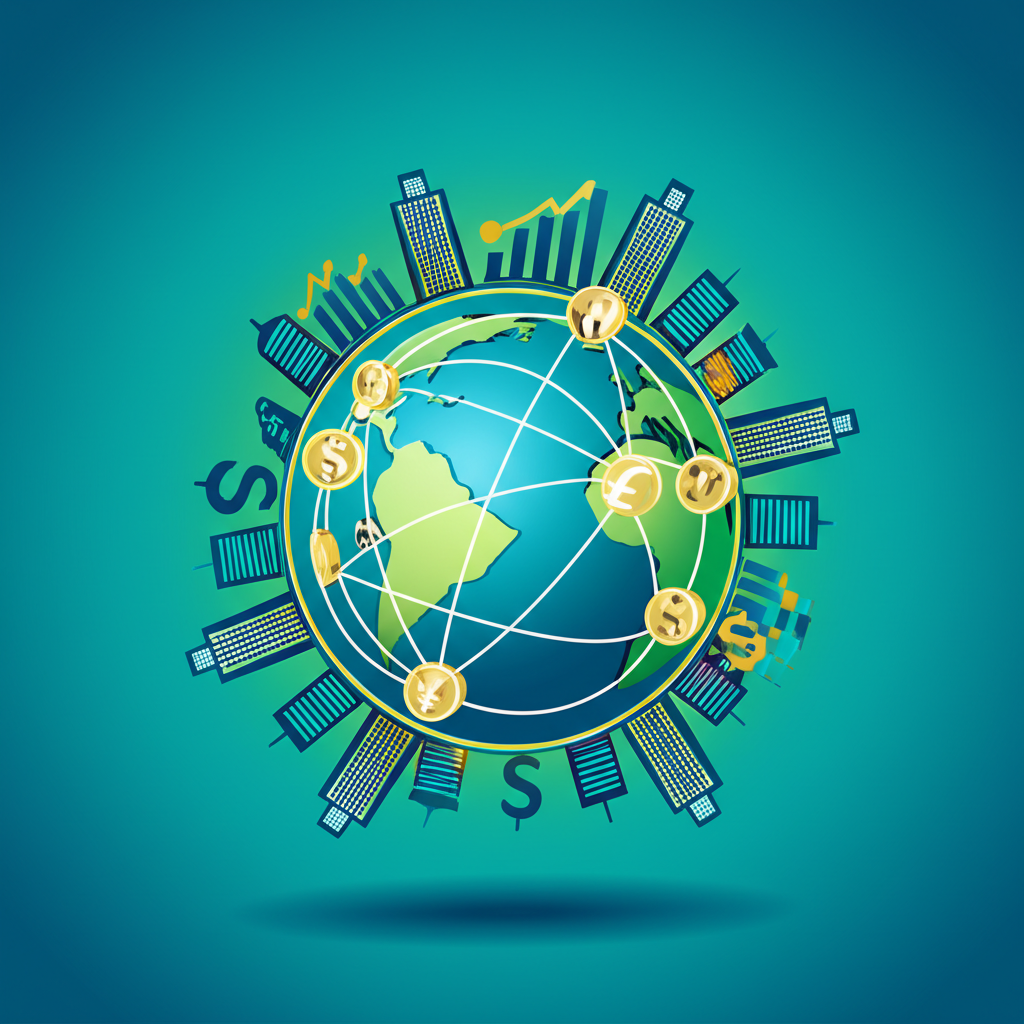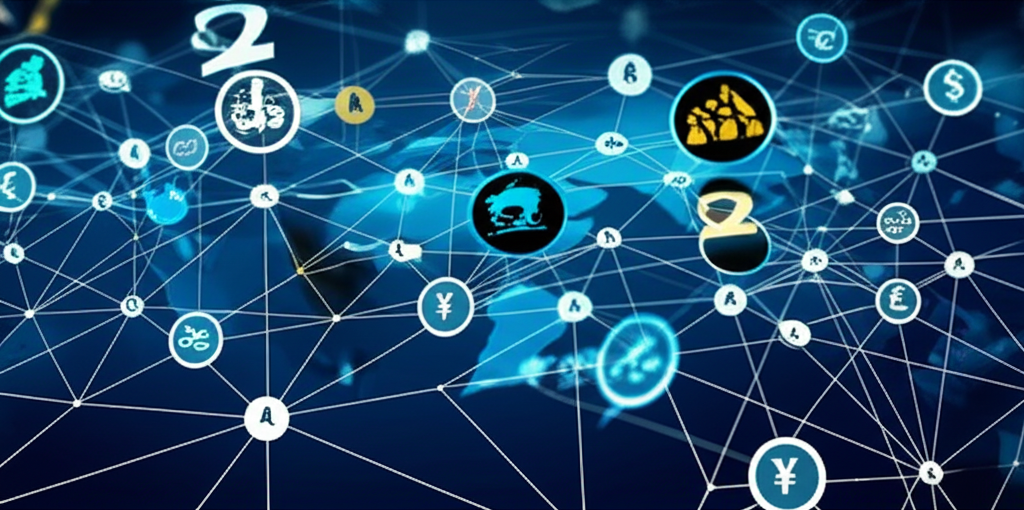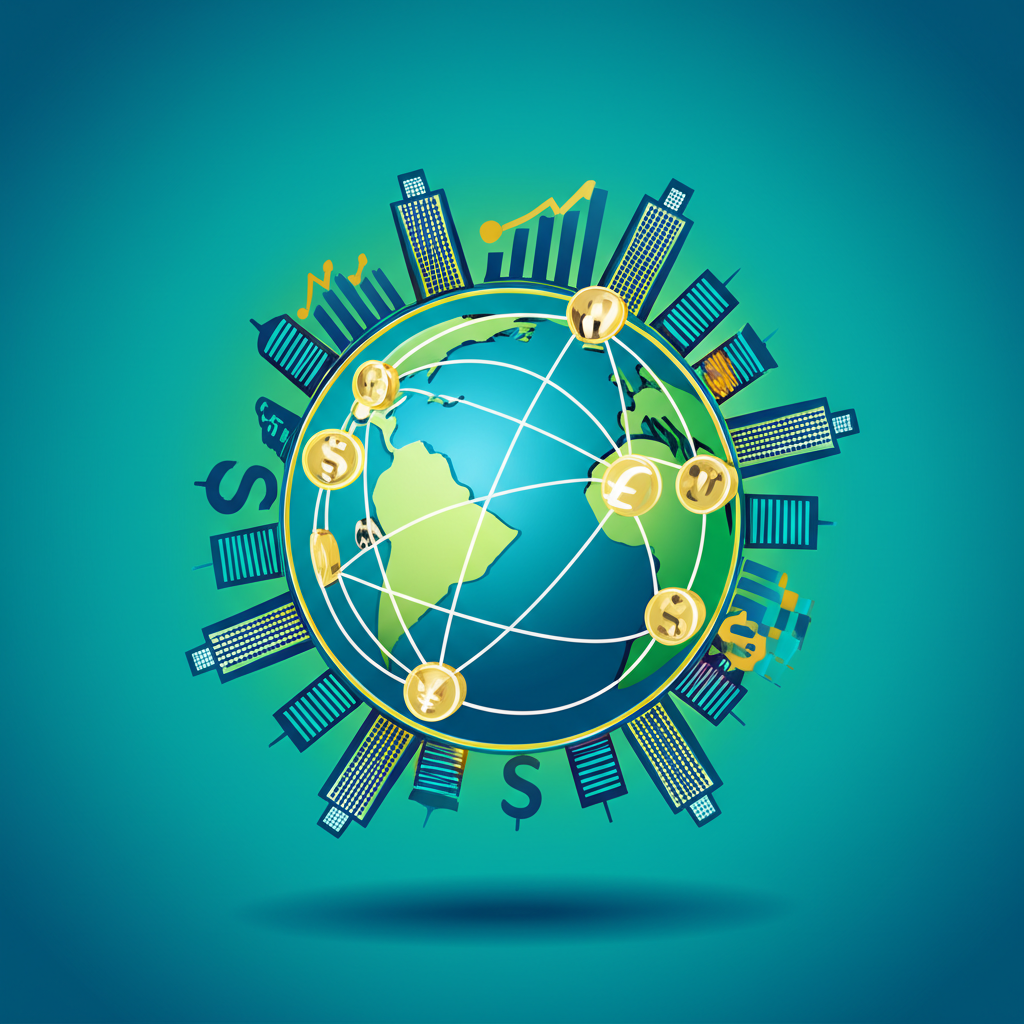Introduction to Global Markets Trading

Engaging in global markets trading has become a central pillar of modern finance, offering both individual and institutional investors the chance to interact with economies far beyond their borders. These markets don’t operate in isolation—they’re deeply linked, responding in real time to shifts in economic data, political developments, and technological innovation. Unlike traditional financial systems limited by geography or time, today’s global markets function nearly around the clock, creating continuous opportunities and challenges. This guide aims to break down the complex ecosystem of international trading, unpacking its core components, the forces that drive price movements, and the practical strategies needed to participate with confidence. Whether you’re building foundational knowledge or refining advanced analysis techniques, the insights here will help you navigate the fast-moving world of cross-border investing.
What Are Global Markets? A Foundational Understanding

At its core, the global financial system is a vast, interwoven network where assets like stocks, bonds, currencies, and commodities are traded across national boundaries. These markets serve a critical role in allocating capital efficiently, enabling international commerce, and supporting wealth creation on a global scale. They allow a tech startup in Silicon Valley to raise funding from investors in Singapore, or a manufacturer in Germany to hedge against currency fluctuations when selling goods in Japan. The seamless movement of capital across borders underscores how deeply integrated the world’s economies have become, with financial decisions in one region often triggering ripple effects thousands of miles away.
Defining Global Financial Markets
Global financial markets include a wide range of instruments—equities, fixed income, foreign exchange, raw materials, and derivative contracts—all traded on exchanges or over-the-counter platforms accessible to participants worldwide. One of their defining features is near-continuous operation. Because major financial centers span multiple time zones—from Tokyo and Sydney to London and New York—trading activity rarely stops, creating a dynamic environment where information flows and prices adjust in real time. This constant connectivity means that an economic surprise in Asia can influence opening prices in Europe and set the tone for U.S. markets later the same day. The depth and liquidity of these markets make them essential engines of global economic activity, capable of absorbing large trades with minimal price disruption.
The Pillars of Global Trade: Key Market Participants

The functioning of global markets depends on a diverse set of players, each contributing in unique ways. Central banks like the U.S. Federal Reserve and the European Central Bank shape monetary conditions by adjusting interest rates and managing money supply, directly influencing borrowing costs and currency values. Multinational corporations use these markets to manage risks, raise capital, and conduct international transactions—often hedging against foreign exchange volatility to protect profits. Institutional investors such as pension funds and insurance companies deploy massive pools of capital across asset classes, seeking stable returns over time. Hedge funds, known for their aggressive strategies, often employ leverage and derivatives to exploit market inefficiencies. Meanwhile, retail traders—individuals accessing markets through digital platforms—have gained unprecedented influence, particularly in volatile or speculative environments. Together, these participants form a complex web of supply and demand that drives price discovery across the globe.
Navigating the Major Global Market Types
Understanding the distinct nature of each market type is essential for building a well-rounded investment approach and managing risk effectively.
Forex (Foreign Exchange) Market: The World’s Largest Arena
The foreign exchange market stands as the largest financial marketplace on Earth, with daily turnover consistently surpassing $7 trillion. In this decentralized market, currencies are traded in pairs—such as EUR/USD or GBP/JPY—reflecting the relative value between two nations’ money. Exchange rates shift constantly based on a mix of macroeconomic fundamentals, including interest rate differentials, inflation trends, trade balances, and political stability. For example, if a country’s central bank raises interest rates while others hold steady, its currency may strengthen as investors seek higher returns. The Forex market’s high liquidity and 24-hour availability make it attractive to traders, but also expose participants to rapid price swings, especially during major news events.
Global Stock Markets: Tracking Corporate Performance Worldwide
Stock markets serve as barometers of corporate health and investor sentiment across different regions. Exchanges like the New York Stock Exchange, NASDAQ, London Stock Exchange, and Tokyo Stock Exchange facilitate the trading of shares in publicly listed companies, enabling capital formation and wealth distribution. Indices such as the S&P 500, Dow Jones Industrial Average, FTSE 100, and Nikkei 225 track the performance of leading firms and offer a snapshot of economic momentum. Many investors gain exposure to these markets through exchange-traded funds (ETFs) or contracts for difference (CFDs), which allow them to benefit from broad market trends without picking individual stocks. These instruments are especially useful for those looking to diversify geographically or respond quickly to macroeconomic shifts.
Commodity Markets: Trading Raw Materials
Commodities represent the physical inputs of the global economy, ranging from energy sources like crude oil and natural gas to industrial and precious metals such as copper, gold, and silver, as well as agricultural goods including wheat, corn, and coffee. Prices in these markets are primarily driven by supply and demand imbalances, which can be influenced by factors like weather patterns, mining output, harvest yields, and industrial consumption. For instance, a cold winter can spike demand for natural gas, while geopolitical tensions in oil-producing regions may lead to supply concerns and price surges. Gold, often viewed as a safe-haven asset, tends to rise during periods of uncertainty, serving as a hedge against inflation and currency depreciation.
Bond Markets: Understanding Global Debt Instruments
Governments and corporations issue bonds to raise capital, promising to repay the principal with interest over time. When investors buy bonds, they essentially become lenders, receiving regular coupon payments until maturity. Sovereign debt, such as U.S. Treasury securities or German Bunds, is often considered low-risk and serves as a benchmark for interest rates across other financial instruments. Corporate bonds, while offering higher yields, come with greater credit risk. Bond prices move inversely to interest rates—when rates rise, existing bonds with lower yields become less attractive, causing their prices to fall. As a result, bond markets are highly sensitive to central bank policies, inflation data, and economic outlooks, making them a key indicator of market expectations.
Key Factors Driving Global Market Movements
To trade successfully in global markets, it’s essential to understand the forces that move prices—not just in one asset class, but across the interconnected financial landscape.
Economic Indicators: The Pulse of Global Health
Economic data releases act as vital signs for national and global economies. Metrics like Gross Domestic Product (GDP) reveal whether an economy is expanding or contracting. The Consumer Price Index (CPI) and other inflation measures show how quickly prices are rising, influencing central bank decisions. Employment reports, such as the U.S. non-farm payrolls, reflect labor market strength and consumer spending power. Interest rate decisions, in turn, affect everything from mortgage costs to corporate borrowing. Traders closely watch these indicators because unexpected results can trigger sharp market reactions. For example, a stronger-than-expected GDP reading might boost equity markets and strengthen the local currency, while rising inflation could fuel expectations of tighter monetary policy and pressure asset valuations.
Geopolitical Events & Policies: Unpredictable Market Movers
Political instability, conflicts, elections, and diplomatic tensions can disrupt financial markets with little warning. Wars, sanctions, or sudden regime changes can alter trade flows, damage investor confidence, and trigger volatility across multiple asset classes. For instance, the outbreak of conflict in Eastern Europe sent shockwaves through energy and agricultural markets, pushing oil and wheat prices sharply higher. Similarly, unexpected election outcomes can shift expectations about future fiscal and regulatory policies, prompting investors to reassess risk exposure. In times of crisis, capital often flows into safe-haven assets like U.S. Treasuries, Swiss francs, or gold, reflecting a flight to safety amid uncertainty.
Central Bank Decisions: Interest Rates and Quantitative Easing
Central banks are among the most powerful actors in global finance. Their decisions on interest rates directly affect borrowing costs, consumer spending, and investment activity. When inflation rises, central banks may increase rates to cool the economy, which can strengthen the currency but slow corporate growth. Conversely, rate cuts can stimulate economic activity but risk fueling inflation. Beyond interest rates, tools like Quantitative Easing—where central banks purchase bonds to inject liquidity—can lower long-term yields and support asset prices. Statements and meeting minutes from institutions like the Federal Reserve, ECB, and Bank of Japan are scrutinized for hints about future policy, often leading to immediate market reactions. Even subtle shifts in tone can move currencies, bonds, and equities globally.
The Impact of Trade Policy and Tariffs on Global Markets
Trade policies—including tariffs, import quotas, and international agreements—play a crucial role in shaping global market dynamics, affecting everything from corporate profits to consumer prices and cross-border investment.
Trade disputes, such as the U.S.-China tensions that escalated in the late 2010s, demonstrate how protectionist measures can disrupt global supply chains. Tariffs—essentially taxes on imported goods—raise costs for businesses that rely on foreign inputs, which are often passed on to consumers. For example, steel tariffs may benefit domestic producers but hurt automakers that depend on affordable imported materials. Retaliatory measures from trading partners can further escalate tensions, leading to reduced export volumes and economic uncertainty. Research from the National Bureau of Economic Research in 2019 showed that U.S. tariffs were largely absorbed by domestic firms and consumers, not foreign exporters, highlighting the real economic cost of such policies. You can find more details on this NBER study here.
On the other hand, trade agreements like the United States-Mexico-Canada Agreement (USMCA) can stabilize relationships, reduce barriers, and encourage investment. By creating predictable rules for commerce, these deals support long-term planning for multinational companies and can boost investor confidence. Sectors such as agriculture, manufacturing, and technology often benefit from expanded market access and lower input costs. For traders, staying informed about trade negotiations and policy shifts is critical. Identifying industries that stand to gain or lose from specific policies allows for strategic positioning. Effective risk management includes diversifying across regions, using hedging instruments, and monitoring political developments that could signal changes in global trade dynamics.
How to Engage in Global Markets Trading
Entering the world of global markets requires more than just access—it demands preparation, the right tools, and a disciplined mindset.
Choosing the Right Broker and Trading Platform
The foundation of successful trading is selecting a reliable broker and platform. Look for firms regulated by reputable authorities such as the Financial Conduct Authority (FCA), Cyprus Securities and Exchange Commission (CySEC), or Australian Securities and Investments Commission (ASIC). Key factors include transparent pricing, low spreads, reasonable commission structures, and fast execution speeds. The platform should offer access to a broad range of markets—Forex, equities, commodities, indices, and bonds—and include essential tools like real-time price charts, economic calendars, and technical analysis features. Mobile compatibility and strong cybersecurity protections are also crucial, especially for active traders who monitor positions throughout the day.
Fundamental vs. Technical Analysis in Global Trading
Traders typically rely on two main approaches: fundamental and technical analysis. Fundamental analysis involves assessing economic data, corporate earnings, interest rates, and geopolitical developments to determine an asset’s intrinsic value. This method is often favored by long-term investors who seek to understand the underlying drivers of price movements. Technical analysis, in contrast, focuses on historical price patterns, volume trends, and chart indicators to forecast future price behavior. Traders using this approach believe that market psychology and past behavior tend to repeat. Many professionals combine both methods—using fundamentals to identify undervalued assets or favorable macro conditions, and technicals to time entries and exits with precision.
Developing a Trading Strategy and Risk Management Plan
A clear trading strategy defines your goals, preferred markets, timeframes, and rules for entering and exiting trades. Whether you’re a day trader, swing trader, or long-term investor, consistency is key. Equally important is a robust risk management framework. This includes setting stop-loss orders to limit losses, sizing positions appropriately relative to your account balance, and avoiding overexposure to any single market or asset. Diversification across asset classes and regions helps reduce vulnerability to unexpected events. Never risk more on a single trade than you can afford to lose. According to the Financial Industry Regulatory Authority (FINRA), disciplined risk management is one of the most critical factors in achieving long-term trading success. You can explore FINRA’s investor education resources on their website.
Risks and Rewards in Global Markets Trading
While global markets offer significant profit potential, they also come with inherent risks that must be carefully managed.
Understanding Market Volatility and Its Implications
Volatility measures how quickly and dramatically prices change over time. High volatility can create opportunities for large gains but also increases the risk of steep losses. The CBOE Volatility Index (VIX), often called the “fear gauge,” reflects expected market turbulence in the near term. During periods of high volatility—such as those triggered by economic crises or geopolitical shocks—traders may adjust their strategies by reducing position sizes, widening stop-loss levels, or temporarily stepping back from the market. In calmer conditions, tighter risk controls and longer holding periods may be more effective. Adapting to changing market environments is a hallmark of seasoned traders.
The Potential for Significant Returns and Capital Loss
The global markets can generate substantial returns, particularly for those who understand macroeconomic trends and can act decisively. Profits can come from currency movements, equity rallies, or commodity price surges. However, losses are equally possible—and often more severe due to leverage, unexpected news, or poor decision-making. Even experienced traders experience drawdowns. The key is to maintain a balanced perspective: recognize the potential for reward, but never underestimate the risk of loss. Sustainable success comes not from chasing quick wins, but from consistent execution, emotional discipline, and continuous learning.
Future Trends and Outlook for Global Markets
The evolution of global markets is being shaped by rapid technological change and shifting economic power.
The Rise of Fintech and Algorithmic Trading
Financial technology is transforming how markets operate. Algorithmic trading—powered by artificial intelligence and machine learning—enables high-speed execution of complex strategies, often detecting patterns invisible to human traders. These systems can process vast amounts of data in milliseconds, reacting to news, price changes, and order flow with unmatched speed. Blockchain technology and digital assets like cryptocurrencies are also introducing new ways to transfer value and conduct transactions, challenging traditional financial intermediaries. While these innovations increase efficiency and accessibility, they also raise concerns about systemic risk, market fairness, and regulatory oversight.
Emerging Markets: New Frontiers for Growth
Economies in regions like Southeast Asia, Latin America, and parts of Africa are emerging as key drivers of global growth. Countries such as India, Vietnam, Brazil, and Nigeria offer expanding consumer bases, young workforces, and increasing industrial capacity. For investors, these markets represent opportunities for higher returns, especially in sectors like technology, infrastructure, and consumer goods. However, they also come with greater risks—including political instability, currency volatility, and weaker legal frameworks. Successful engagement requires thorough research, local insight, and careful risk assessment. As global supply chains diversify and digital adoption accelerates, emerging markets are likely to play an increasingly central role in the financial world.
Conclusion: Mastering the Interconnected World of Global Markets
Trading in global markets is a challenging yet rewarding pursuit that demands knowledge, discipline, and adaptability. From the massive scale of the Forex market to the strategic importance of stock indices and commodities, each segment offers unique opportunities and risks. Success depends on understanding not just individual assets, but how they interact within a broader economic and geopolitical context. Macroeconomic data, central bank policies, and trade developments all play pivotal roles in shaping market direction. By choosing reliable platforms, combining analytical methods, and adhering to strict risk controls, traders can navigate this complex landscape with greater confidence. The journey is ongoing—markets evolve, new technologies emerge, and global dynamics shift. Staying informed, flexible, and committed to sound decision-making is the foundation of long-term success.
Frequently Asked Questions About Global Markets Trading
1. What is global market trade, and how does it differ from local trading?
Global market trade involves buying and selling financial assets (like currencies, stocks, commodities) across international borders, often operating 24/5 due to different time zones. Local trading, in contrast, is confined to a specific country’s market hours and regulatory environment, primarily involving domestic assets.
2. How do major global market indices like the Dow Jones and S&P 500 reflect world economic health?
Major global indices like the Dow Jones Industrial Average (U.S.) and S&P 500 (U.S.) represent the performance of leading companies in their respective economies. Their movements are often seen as barometers of investor confidence and economic outlook. While specific to one country, their prominence means they significantly influence global market sentiment and investment flows, thus reflecting broader world economic health indirectly.
3. Can individual investors actively trade global market futures, and what are the associated risks?
Yes, individual investors can trade global market futures through various online brokerage platforms. Futures contracts allow traders to speculate on the future price of an asset (e.g., oil, gold, stock indices). The associated risks are significant due to leverage, which magnifies both gains and losses. Futures markets are highly volatile, require substantial capital, and demand a deep understanding of market dynamics and risk management.
4. Why are global markets falling, and what specific economic or geopolitical events typically trigger such downturns?
Global markets fall due to various factors, often a combination of economic and geopolitical events. Common triggers include:
- Economic Slowdowns/Recessions: Weak GDP growth, high inflation, or rising unemployment.
- Interest Rate Hikes: Central banks raising rates to combat inflation, making borrowing more expensive.
- Geopolitical Instability: Wars, political crises, or significant trade disputes.
- Financial Crises: Banking failures, debt crises, or asset bubbles bursting.
- Pandemics/Natural Disasters: Events that disrupt global supply chains and economic activity.
5. How will changes in trade policies, such as new tariffs, specifically affect the global stock market?
Changes in trade policies, like new tariffs, can significantly affect the global stock market by:
- Increasing Costs: Tariffs raise import costs for businesses, reducing profit margins.
- Disrupting Supply Chains: Companies may struggle to source materials or sell products internationally.
- Reducing Global Trade: Leading to lower export volumes and economic growth.
- Creating Uncertainty: Investors become hesitant, leading to sell-offs.
- Triggering Retaliation: Other countries may impose their own tariffs, escalating trade tensions.
These factors can lead to lower corporate earnings, reduced investor confidence, and overall market declines, especially for companies heavily involved in international trade.
6. What are the best resources for obtaining live charts and real-time news for the U.S. stock market today?
For live charts and real-time news for the U.S. stock market, consider:
- Financial News Outlets: Bloomberg, Reuters, The Wall Street Journal, Financial Times.
- Trading Platforms: Most reputable brokers offer integrated real-time data and news feeds.
- Charting Platforms: TradingView, MetaTrader, Thinkorswim.
- Economic Calendars: Websites that track upcoming economic data releases.
7. Is it realistic to expect to make $1000 per day from trading global markets, and what factors influence daily profitability?
While possible for highly experienced traders with substantial capital and risk tolerance, consistently making $1000 per day from trading global markets is not realistic for most. Daily profitability is influenced by:
- Capital Size: Larger capital allows for larger positions and potentially higher gains.
- Trading Strategy: Effectiveness and consistency of your approach.
- Market Volatility: Greater volatility offers more profit opportunities but also higher risk.
- Risk Management: Strict adherence to stop-losses and position sizing.
- Experience & Discipline: Psychological resilience and continuous learning.
Such returns often come with significant risk and are not typical for beginners or those with limited capital.
8. Which platforms and brokers are recommended for trading various global market instruments, including Forex and commodities?
Recommended platforms and brokers vary based on individual needs (e.g., experience level, capital, desired instruments). Popular options for diverse global market instruments include:
- Interactive Brokers: Known for wide market access and low costs, suitable for experienced traders.
- TD Ameritrade (now Schwab): Offers robust platforms like thinkorswim, good for U.S. stocks, options, and futures.
- IG: A global leader in CFDs and spread betting, offering access to Forex, indices, and commodities.
- Pepperstone/IC Markets: Popular choices for Forex and CFD trading due to low spreads and fast execution.
Always ensure your chosen broker is regulated in your jurisdiction and offers the instruments you intend to trade.
9. What role do central bank announcements and interest rate decisions play in global market movements?
Central bank announcements and interest rate decisions are pivotal drivers of global market movements. When central banks (e.g., the Fed, ECB) raise interest rates, it typically strengthens the local currency, makes borrowing more expensive, and can dampen stock market growth by increasing the cost of capital for companies. Conversely, lowering rates can weaken a currency, stimulate borrowing and investment, and often boost stock market performance. Their communications also provide forward guidance, influencing investor expectations about future economic conditions and policy actions across asset classes globally.

留言